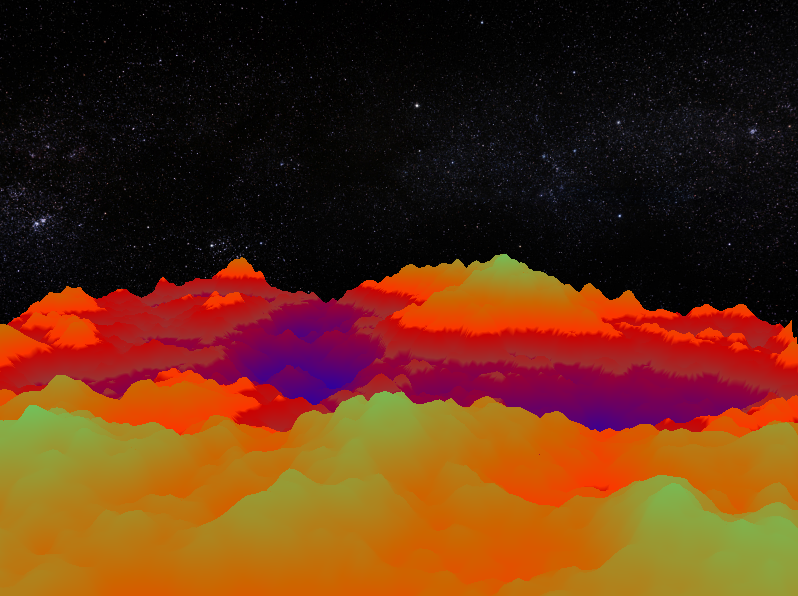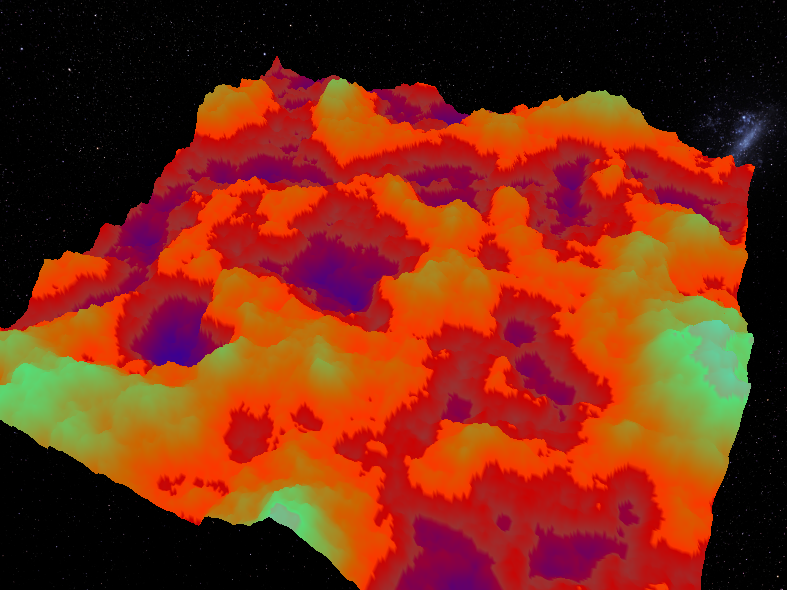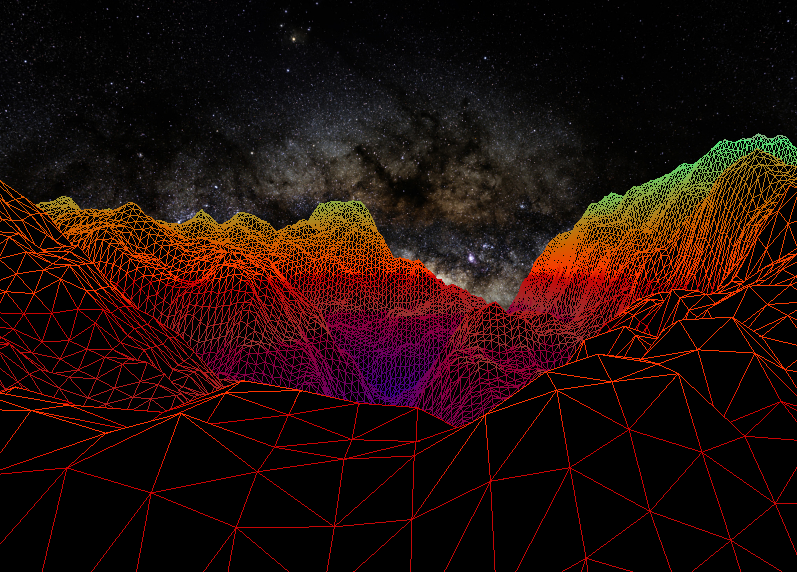Using Perlin Noise for terrain generation with c++ (OpenGL)
Developed on Linux (Ubuntu 14.04 LTS).
OPENGL 3.0
Shader Version: 130
compile with g++ using the following options:
-lglut -lGLEW -lGL -lGLU -lSOIL -std=c++11
You can fly around the scene (no-clip)
Move forwards: w
Move backwards: s
Strafe right: d
Strafe left: a
You can manipulate the terrain in a variety of ways.
Persistence Up: P (uppercase)
Persistence Down: p (lowercase)
Persistence significance:
Persistence plays an important role in the noise function. Specifically,
it is the rate at which the amplitude is increased each successive
octave.
Octaves Up: O (uppercase)
Octaves Down: o (lowercase)
Octave Significance:
The amount of octaves specifies how many different noise funtions to add
together (each time doubling the frequency) to get the final
result. Generally speaking, higher octaves = more detail, but after
about 8 or so, you can't tell the difference.
Flatness Up: I (uppercase)
Flatness Down: i (lowercase)
Flatness Significance:
When feeding x/y value pairs into the noise function, they are each
divided by the value of the flatness first. As the name implies, upping
the flatness value "flattens out" the terrain. This is because upping
the flatness (divisor) causes the points you end up sampling to be
closer together.
Point-spread Up: U (uppercase)
Point-spread Down: u (lowercase)
Point-spread Significance:
Point spread is the distance between vertices. This doesn't affect the
output of the noise function. However, it has a significant impact on
the final result.
Min-Range Up: Y (uppercase)
Min-Range Down: y (lowercase)
Max-Range Up: T (uppercase)
Max-Range Down: t (lowercase)
Range Significance:
When the noise function spits out noise values,they are intially between
-1 and 1. They are mapped to the range min - max. This does not affect
the vertex coloring, however. Although it should for best effect.
Seed Up: R (uppercase)
Seed Down: r (lowercase)
Seed significance:
changing the seed effectively gives you new terrain without manipulating
any parameters.
Technically however, because this value is just is an input offset to
the noise function, which is entirely deterministic, you could also
think of it as giving you a different chunk of the same landscape.
If you make the seed increment small enough, you'll acually see the
terrain scroll across the screen as you change the seed.
Radius Up: N (uppercase)
Radius Down: n (lowercase)
Radius Significance:
Radius is the block-distance from the center to the perimeter of the
entire landscape. Its default value is 0, so there is one block total.
Upping this value to 1, surrounds the center block with 1 block on each
side, yeilding a landscape comprised of 9 total blocks.
Toggle fill mode: m (lowercase)
You can render in either full-color mode or in "wireframe mode"
Wireframe mode is actually a wireframe outline over solid black
triangles. Wireframe is currently the default.
Rendering in full color yeilds a SIGNIFICANT performance advantage
however.



